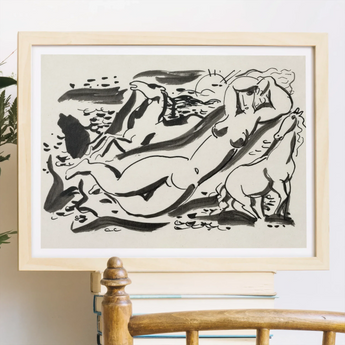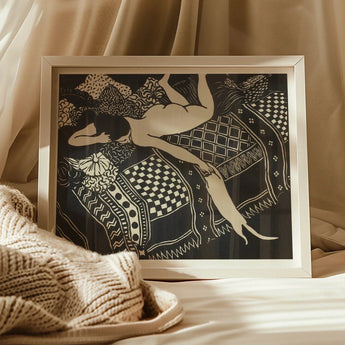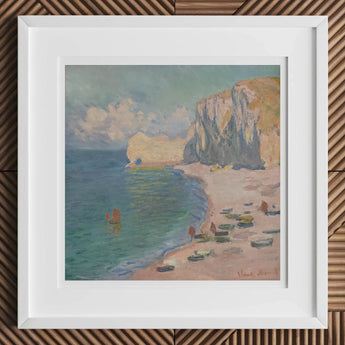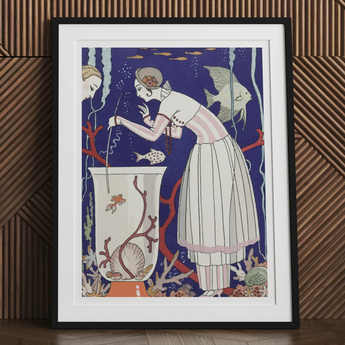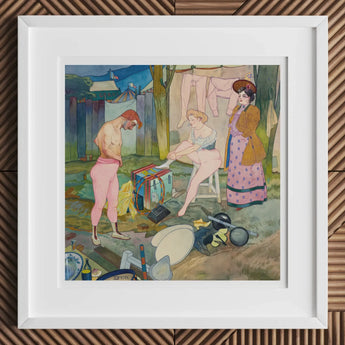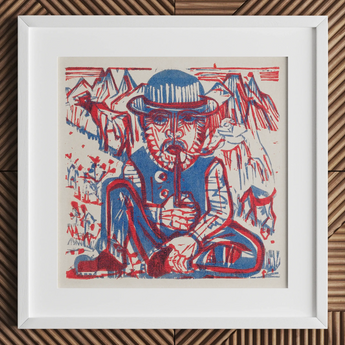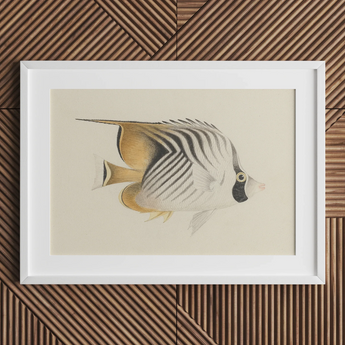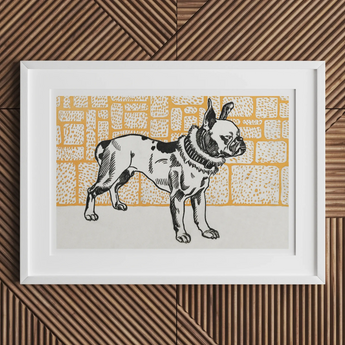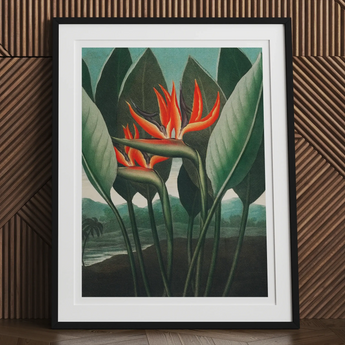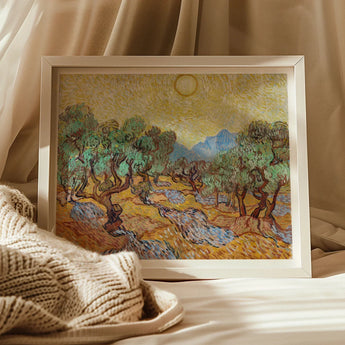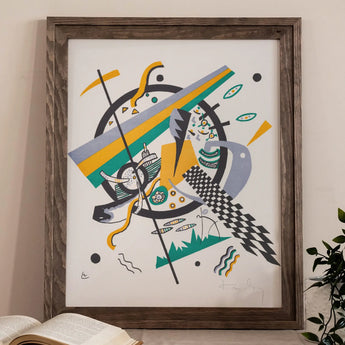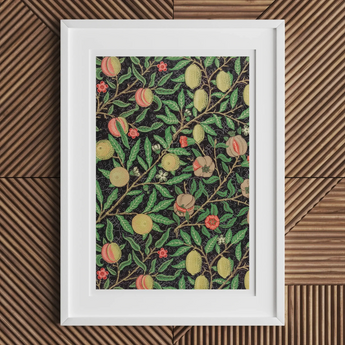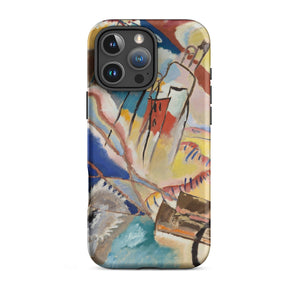Wassily Kandinsky
Step into the kaleidoscopic realm of Wassily Kandinsky, the alchemist who transmuted pigment into pure emotion, revolutionizing 20th-century art with his symphonic abstraction. This Moscow-born maverick, who traded legal briefs for paintbrushes, orchestrated a visual uprising that shattered the shackles of representation.
Your Latest Loves
FAQs
About this collection
What happens when a man stops painting the world outside his window and begins painting the storm inside his ribs? Wassily Kandinsky, born beneath Moscow’s somber sky, turned his back on law and empire to chase the trembling edge of pure abstraction—where line forgets form, and color no longer describes, but sings.
In Munich, he co-founded Phalanx, where brushstrokes mutinied, and avant-garde art slipped into being like a birth both violent and divine.
With Der Blaue Reiter, alongside Franz Marc, Kandinsky found his spiritual code: blue for infinity, the rider on horseback for the soul’s flight beyond earthly limits.
In works like Composition VII, chaos became composition, and geometry dissolved into prophecy. Circles, trembling like orbits, filled canvases like Several Circles, where color theory became gospel, and abstraction became a new alphabet.
As a Bauhaus teacher, Kandinsky taught not technique, but courage—to Expressionist painters, to every trembling hand after him.
Kandinsky's artistic odyssey, from Impressionist dabbler to abstract virtuoso, crescendoed in Munich's avant-garde crucible, where he co-founded the Phalanx group and later, the legendary Der Blaue Reiter. Here, blue wasn't just a color; it was a spiritual stairway to the cosmos, with each equestrian figure a metaphysical jockey riding towards the non-objective horizon.
Take "Improvisation no. 30 (Cannons)": it isn't merely a painting—it's a chromatic cyclone, a whirlwind of forms and hues that pirouette on the razor's edge between chaos and harmony. Meanwhile, "Painting with a Green Center" dances on the canvas, a celestial ballet of geometric performers defying gravity and logic alike.
At the Bauhaus, Kandinsky didn't just teach; he rewired the synapses of artistic perception, his theories igniting a creative conflagration that still burns bright in the annals of Expressionism. This Russian dynamo did more than paint pictures; he composed visual concertos, each brushstroke a note in the grand symphony of abstraction, leaving an indelible legacy that continues to reverberate through the corridors of modern art, challenging us to see beyond the visible and feel the invisible pulse of pure creativity.
To stand before his work is to witness the moment a canvas forgets the world and remembers the spirit instead.
Even now, his vision hums beneath the skin of modern art, like a color you can hear but never quite name.
What is Kandinsky famous for?
Wassily Kandinsky was famous for being one of the pioneers of abstract art. Here are some key points on what he is known for:
- Pioneering abstract art and moving away from representational painting. He believed that art should express the inner world of the artist rather than represent the outside physical world. His works became increasingly abstract over time as he eliminated references to objects and depth.
- Developing a unique visual language of form, color and line to express emotions and spirituality. He saw connections between music and painting, hearing colors and seeing sounds, which influenced his artistic style.
- Publishing theoretical writings that articulated his ideas about the spiritual nature of art and the expressive power of abstract forms and color. Major works include 'On the Spiritual in Art' (1912) and 'Point and Line to Plane' (1926).
- Being a founding member of influential modern art groups like the Blue Rider and the Bauhaus, which promoted avant-garde styles.
- Creating iconic abstract paintings like his 'Compositions', 'Improvisations' and 'Impressions' series that had musical titles and experimental styles.
- Having a major influence on the development of modern abstract painting in the 20th century through his art and theories. He is considered a leader of abstract art along with artists like Mondrian.
Did Kandinsky hear colors?
Kandinsky did indeed have synesthesia, a neurological condition where stimulation of one sense triggers an involuntary experience in another sense. In Kandinsky's case, he associated colors with sounds and music.
- Kandinsky experienced colors when he heard music, and heard music when he painted. He described his paintings as "compositions" and gave them musical titles to reflect this synesthetic experience.
- His synesthesia directly influenced the development of his artistic style towards abstraction, as he tried to visually express the colors and sounds he internally experienced.
- In his art theory book "On the Spiritual in Art", Kandinsky articulated connections between color, emotion, and sound. He saw color as a spiritual language that could express inner states.
- Kandinsky explored synesthetic experiences through multi-media performances called "The Yellow Sound", combining original music, lighting, and visuals.
- His synesthesia shaped his belief that abstract art could express the "inner necessity" of the artist through color and form, not external reality.
- Iconic abstract paintings like "Composition VII" embodied Kandinsky's synesthetic perspective with their fluid colors, forms, and musical titles.
What materials did Kandinsky use?
Key materials Wassily Kandinsky used in his paintings:
- Oils - Kandinsky primarily used oil paints, especially in his iconic abstract works. He experimented with different types of oils and binding media like linseed oil and wax medium.
- Canvas - Canvas was Kandinsky's preferred painting surface, though he also painted on other supports like cardboard, wood, and glass. He utilized different canvas types including fine-woven canvas.
- Watercolors - Earlier in his career, Kandinsky frequently used watercolors, gouache, and tempera paints. These appeared in his Blue Rider period works.
- Palette knives - Kandinsky used palette knives to apply paint in his plein air landscapes. This created textured, expressive brushstrokes.
- Printmaking materials - Kandinsky explored various printmaking techniques, working with materials like wood, linoleum, zinc, and limestone to produce woodcuts, lithographs, and etchings.
- Mixed media - In later Bauhaus period works, Kandinsky incorporated unusual materials like sand, glass, and string into his paintings.
Where are Kandinsky's paintings?
- Russia - The State Tretyakov Gallery in Moscow has the largest collection of Kandinsky's paintings in Russia, including masterpieces like Composition VII. The Hermitage Museum in St. Petersburg and the Russian Museum also have significant holdings.
- Germany - The Lenbachhaus in Munich holds the largest collection of Kandinsky's paintings in Europe, spanning his Blue Rider and Bauhaus periods. Many early career works are here.
- France - The Centre Pompidou in Paris and the Musée d'Art Moderne de la Ville de Paris both have sizable collections of Kandinsky's later abstract works he made while living in France.
- United States - The Guggenheim Museum in New York has over 100 of Kandinsky's paintings, the largest collection outside Europe. The Museum of Modern Art, Metropolitan Museum of Art, and Philadelphia Museum of Art also have excellent representations.
- Switzerland - The Beyeler Foundation near Basel holds key later abstract paintings like Several Circles.
- Other Notable Collections - Significant groups of works are also held at the National Gallery in Washington D.C., the Art Institute of Chicago, Milwaukee Art Museum, and the Tate Modern in London.
What is Kandinsky's most famous work?
Kandinsky's most renowned and iconic work is generally considered to be Composition VII (1913). This large-scale abstract painting exemplifies Kandinsky's groundbreaking style and theories on expressing spiritual states through abstract form and color.
Key reasons Composition VII stands out:
- It was one of his first purely abstract paintings that contained no identifiable objects, representing a breakthrough in abstraction.
- The scale and complexity of the work was unprecedented at the time. It combined expressive brushstrokes, colors, shapes and lines into a swirling, dynamic composition.
- Kandinsky considered it his most complex painting and the pinnacle of his pre-World War 1 artistic style, synthesizing years of artistic development.
- It embodied his synesthetic perspective, with fluid colors and forms evoking music that Kandinsky claimed to hear as he painted.
- The work exemplified Kandinsky's artistic philosophy outlined in On the Spiritual in Art, giving visual form to his belief in the spiritual and emotional power of abstract art.
- It helped establish Kandinsky as a revolutionary pioneer of abstract painting and secured his fame as one of the most influential artists of the 20th century.
What techniques did Kandinsky use?
Painting Techniques
- Expressive brushstrokes - Kandinsky used loose, gestural strokes to apply paint, often with a bristle brush. This created texture and dynamic energy.
- Color blending - He blended colors directly on the canvas using wet-on-wet techniques to create fluid transitions between hues.
- Stippling and pointillism - Kandinsky used stippling and applying small dots of paint to optically mix colors rather than blending.
- Sgrafitto - He would scrape into wet paint to reveal underlying layers, creating texture and depth.
Materials
- Oils - His preferred this painting medium, though he experimented with different types of oils.
- Canvas - His most common surface, but also painted on board, glass, wood, and other supports.
- Watercolors - Used frequently early in his career.
- Printmaking - Explored various printmaking techniques like woodcuts, lithography, and etching.
- Mixed media - Incorporated unusual materials like sand, glass, and string in later works.
- Tools - Palette knives, a variety of brushes, and other painting tools.
Where can my order ship to?
Any treasure you find here can be shipped to:
North America
Canada, Mexico, Continental United States
South America
Argentina, Brazil
Europe
Albania, Andorra, Austria, Belgium, Bosnia & Herzegovina, Bulgaria, Croatia, Cyprus, Czechia, Denmark, Estonia, Faroe Islands, Finland, France, Germany, Gibraltar, Greece, Greenland, Guernsey, Hungary, Iceland, Ireland, Isle of Man, Italy, Jersey, Kosovo, Latvia, Liechtenstein, Lithuania, Luxembourg, Malta, Monaco, Montenegro, Netherlands, North Macedonia, Norway, Poland, Portugal, Romania, Russia, San Marino, Serbia, Slovakia, Slovenia, Spain, Sweden, Switzerland, United Kingdom, Vatican City
Middle East & Asia
China, Hong Kong, India, Indonesia, Israel, Japan, Lebanon, Malaysia, Philippines, Singapore, South Korea, Taiwan, Thailand, Türkiye, United Arab Emirates, Vietnam
Africa
South Africa
Oceania
Australia, New Zealand
—
Every package tracked so you can watch your treasure move from A to B to You.
Sent carbon neutral at no extra charge. Helping you gain peace of mind your money's being kind.
Orders to the rest of the world coming as soon as I can!
How much will shipping cost?
Delivery to 60+ countries
Free shipping worldwide — check if we ship to you
When will my package arrive?
USA: 4-9 days • Canada: 5-12 days • UK: 4-9 days • Europe: 5-10 days • Australia: 4-9 days • New Zealand: 5-12 days • Rest of the world: 3-4 weeks
Why the wait? Every treasure you find here is produced after you purchase. So the delivery times include production, quality assurance, thoughtful packaging and shipping. More details on orders and shipping
Every package tracked so you can watch your treasure move from A to B to You.
Sent carbon neutral at no extra charge. Helping you gain peace of mind your money's being kind.
Can I return my order?
1. Open Request
You're welcome to open a return / exchange request within 30 days of your order's delivery. All items for return must be delivered back in their original condition, with their original packaging included.
2. Wait For Approval
Expect a reply within 24-48hr
Once your return's approved, you'll receive the return address, so you can mail items back with confidence. Please wait for approval before mailing anything, to avoid confusion and disappointment.
3. Return Items
Return shipping: You pay for return shipping fees unless you received faulty / incorrect items or they get damaged in transit.
Tracking: Please send your items back with tracking. No refunds can be given for items that aren't received.
On sale: No returns or exchanges for discounted / on sale items unless they arrived damaged or faulty.
Payment method: After your return's approved, you'll be refunded via your original payment method.
...
Learn more about my step-by-step returns process.


